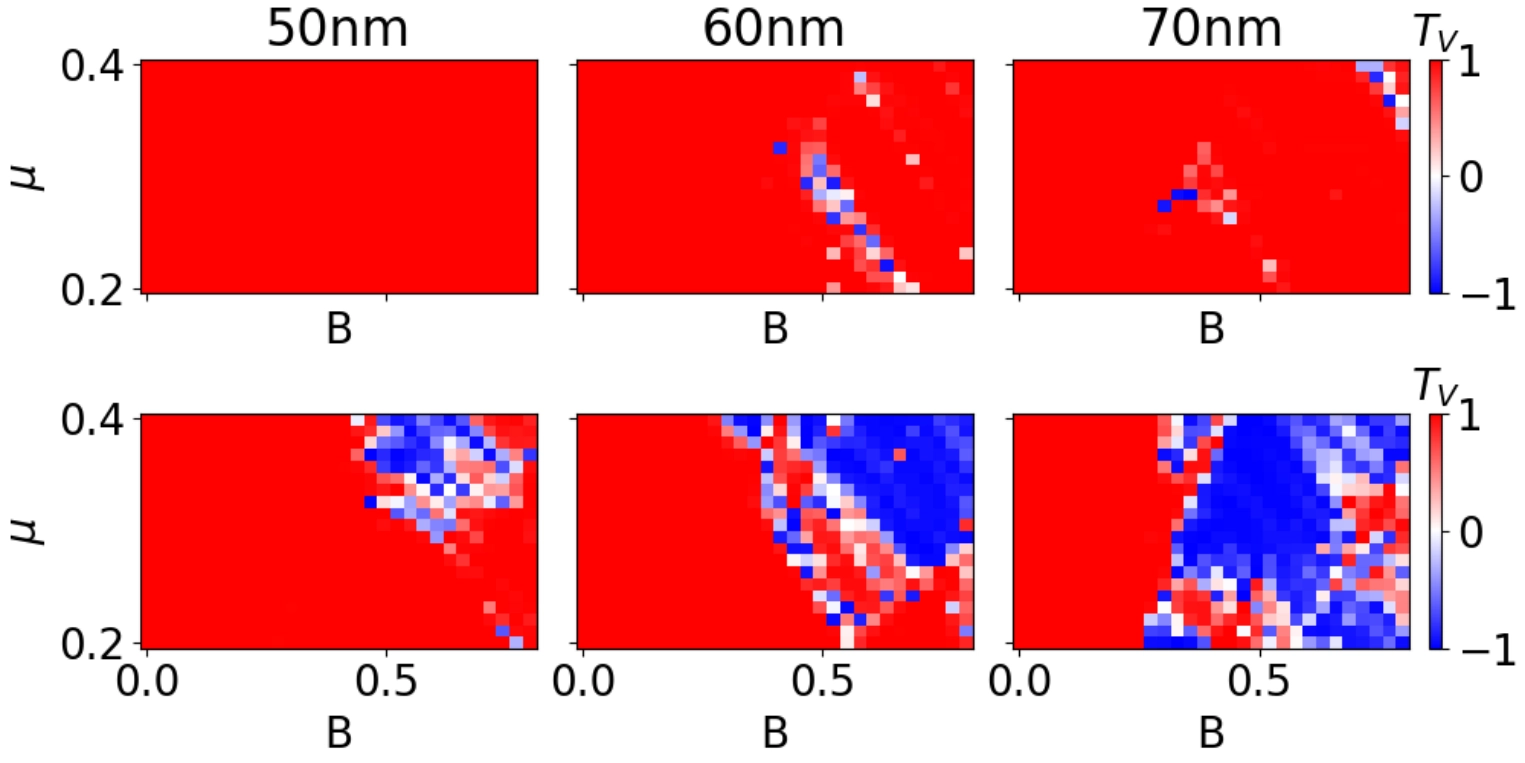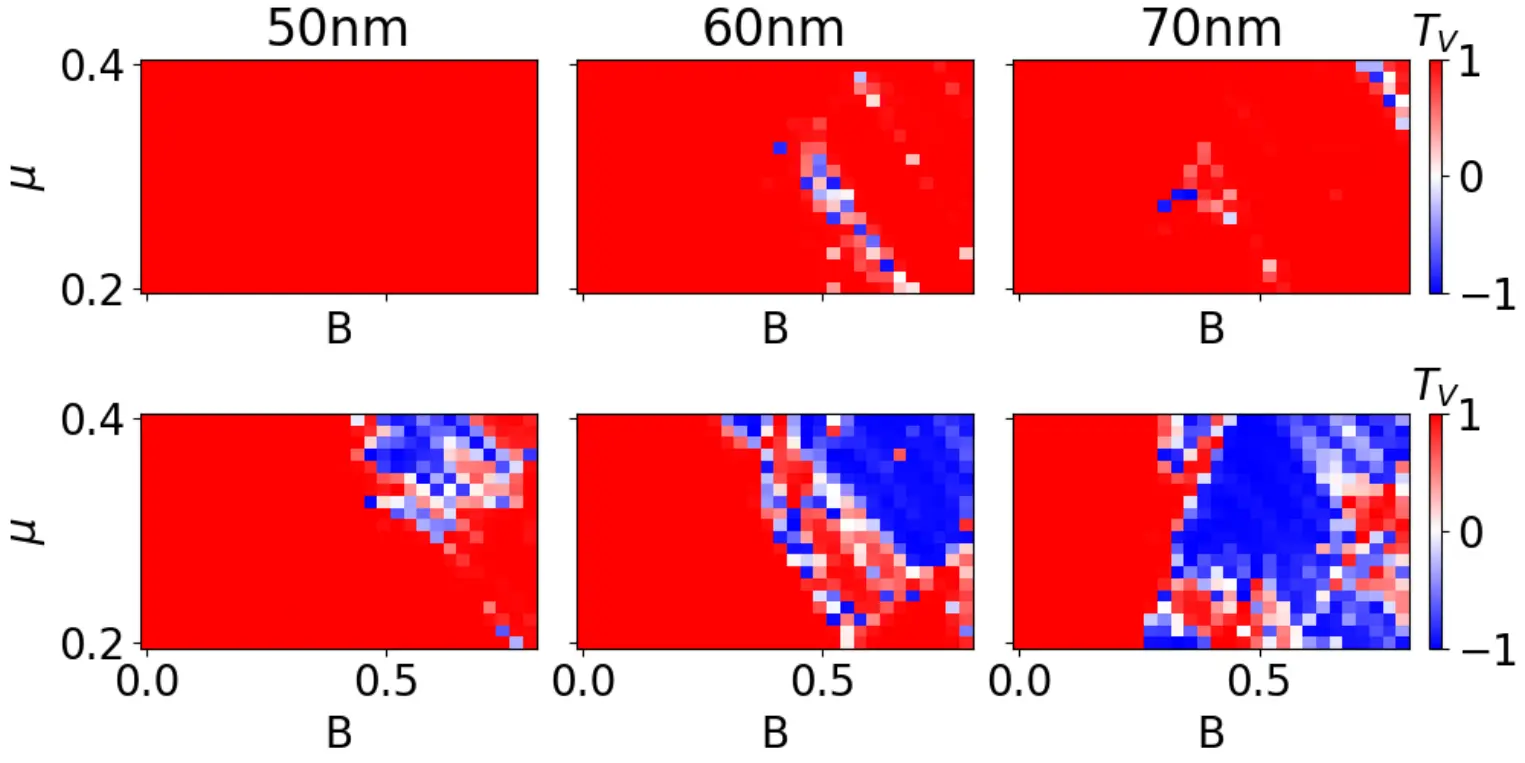

Mitigating disorder and optimizing topological indicators with vision-transformer-based neural networks in Majorana nanowires
Disorder remains a major obstacle to realizing topological Majorana zero modes (MZMs) in superconductor-semiconductor nanowires, and we show how deep learning can be used to recover topological MZMs mitigating disorder even when the pre-mitigation situation manifests no apparent topology. The disorder potential, as well as the scattering invariant () normally used to classify a device as topologically non-trivial are not directly measurable experimentally. Additionally, the conventional signatures of MZMs have proved insufficient due to their being accidentally replicated by disorder-induced trivial states. Recent advances in machine learning provide a novel method to solve these problems, allowing the underlying topology, suppressed by disorder, to be recovered using effective mitigation procedures. In this work, we leverage a vision transformer neural network trained on conductance measurements along with a CMA-ES optimization framework to dynamically tune gate voltages mitigating disorder effects. Unlike prior efforts that relied on indirect cost functions, our method directly optimizes alongside additional local density of states-based topological indicators. Using a lightweight neural network variant, we demonstrate that even highly disordered nanowires initially lacking any topologically non-trivial regions can be transformed into robust topological devices.
← Back to publications